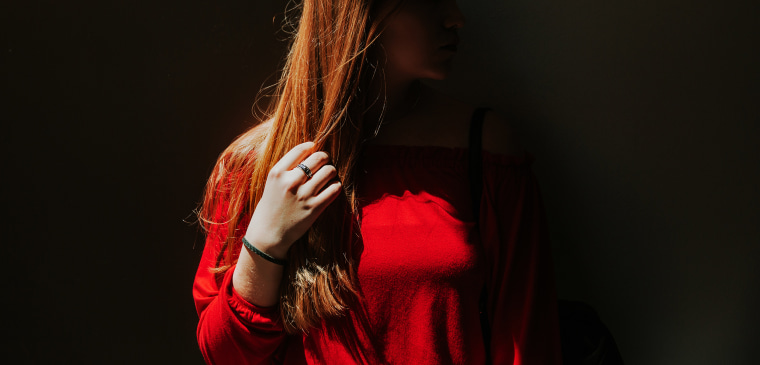The hair care brand Olaplex removed an ingredient known as lilial from its popular No. 3 Hair Perfector product following an EU ban on the chemical. European regulators cited research in animals suggesting that lilial, typically used as a fragrance, could cause infertility issues.
The news spread across social media this week with consumers worried that the product they've been using in their hair might have been negatively affecting their reproductive health. But experts who spoke to TODAY say that the science on lilial (butylphenyl methylpropional) is a little more complicated than that.
"In September 2020, the EU regulatory authority announced their intent to have butylphenyl methylpropional commonly referred to as 'lilial' phased out by March of 2022. At Olaplex, lilial was previously used in small amounts as a fragrance in No. 3 Hair Perfector. It is not an active or functional ingredient," the company told TODAY in a statement.
So, without lilial, your new bottle of No. 3 might smell a little different, but it should work just as it always has, Kelly Dobos, a cosmetic chemist and former president of the Society of Cosmetic Chemists, told TODAY.
Lilial is just one component of the fragrances used in cosmetics. “You’ll often see it pulled out on a label because it also can be an allergen to some people,” she explained. And while it might contribute to the overall sensory experience of using a product, it’s not something that’s integral to the way the product works.
"While this phase-out is limited to the EU, out of an abundance of caution, Olaplex proactively removed lilial from our No. 3 Hair Perfector globally," the company's statement continued. "Since January 2022, Olaplex no longer sold products using lilial in the UK or EU."
Following the release of a 2019 report from the Scientific Committee on Consumer Safety, EU officials announced a ban on lilial in cosmetic products in 2020, which would take effect March 1, 2022. The safety report found that male and female rats that had been fed lilial showed some reproductive toxicity effects.
So the data have been out there for a couple of years now. But that March deadline is likely why it’s receiving so much attention now, Victoria Fu, a cosmetic chemist and co-founder of Chemist Confessions, told TODAY. Although the ban only affects products in the EU, Olapex is taking lilial out of its products worldwide.
However, the studies in the report did not show that lilial can cause fertility issues in humans; all of the data on reproductive toxicity was performed in animal models, Fu and Dobos said. And the lilial doses used in rats in the report are “incredibly high,” Fu explained. (The rats were exposed 5 to 50 milligrams of lilial per kilogram of their body weight per day, depending on the study.)
Also, in these studies, the rats were fed lilial, which is likely to lead to a higher level of absorption than using a product on the skin or hair — especially a product that you rinse off, according to Fu and Dobos.
Animal models like these are a very useful tool in sussing out potential harmful effects of ingredients, especially in the context of reproductive health, Fu said, because ethically, “we definitely don’t want to start validating that in humans.” At the same time, though, know that the animal models here are certainly not a “one to one translation” to humans, she said.
It's also important to keep in mind that this isn't just about Olaplex: In that SCCS report, the worry is not about a single product with a high concentration of lilial but rather the potential effects from using multiple household and cosmetic products that contain this ingredient in small amounts, Dr. Evan Rieder, an assistant professor in the Ronald O. Perelman Department of Dermatology at NYU Grossman School of Medicine, told TODAY.
"It seems like the concern is more when these things are used in aggregate," he said, "which is really hard to quantify."
Dobos said the use of lilial in other fragrance products, like air fresheners, might actually be a bigger concern than its use in rinse-out hair products. "You certainly would not want that ingredient to be used in a component of fragrance for something that you might ingest," she said. Household products like those typically don't list the individual pieces of a fragrance and simply just say "fragrance," Dobos added, which can make it more challenging to avoid particular compounds.
In general, the EU tends to take a more precautionary approach to banning ingredients like these in cosmetic products than the Food and Drug Administration in the U.S., Rieder said, adding that it's a "smart way to be listening to the general population and protecting that maternal-fetal environment" just in case. (Which is not to say that the FDA isn't careful about these things, Dobos noted. It's just a different approach.)
While it's not unreasonable to want to phase this ingredient out, the experts TODAY spoke to say this news shouldn't be a major cause for worry for anyone who's been using Olaplex.
If you happen to have some Olaplex No. 3 that still contains lilial, Dobos (an Olaplex user herself) doesn't "see great concern" in finishing that bottle, especially knowing that the reformulation is already underway.
"We definitely don't want people to head straight to the doctor and feel like, 'Oh my gosh, I've basically been poisoned,'" Fu said. "It's more that we find comfort in the fact they are looking at all these compounds and trying to take a more conservative approach."

